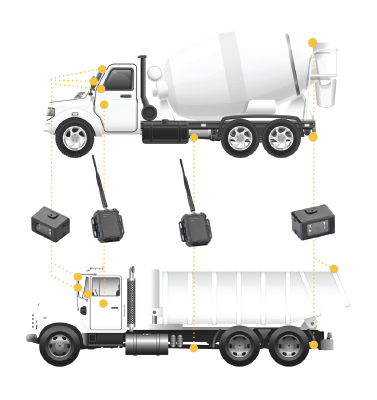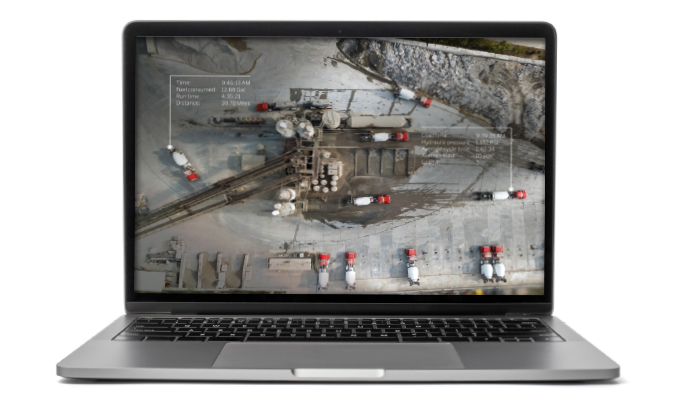By Steve Young
Ready mix drivers use technology to enhance productivity from the time they clock in until they clock out. At every stage of the concrete production and delivery lifecycle, there is room for improvement and often a challenge to overcome. Technology solutions that are purpose built to monitor drum rotation, material quality, vehicle health, heavy equipment-specific navigation, and incident monitoring enable ready mix fleets to be more productive, more profitable, and safer.
REAL-TIME INTELLIGENCE
How does an organization stop a problem before it escalates? The answer is with real-time intelligence to empower the team. Monitoring systems that provide real-time intelligence give fleet managers up-to-date information on job status, conditions, and even quality control on materials. With this information, operators and stakeholders can make efficient use of their resources to address potential problems, improve safety decisions, and ensure structural integrity.
Some fleet management technology allow software and sensors to enable users to create customized monitoring solutions. Real-time intelligence offers a range of on-demand information and activity reports on crucial data such as vehicle location, condition, and mileage. With real-time data, businesses can manage their fleet performance to have timely and accurate business information.
VIDEO INTELLIGENCE
Research from the American Trucking Association shows that 80% of accidents are not the fault of the vocational driver, and now ready mix operations use 360-degree video intelligence (VI) to have complete visibility of the truck’s environment. VI allows video footage to be paired with real-time information, including vehicle speed, GPS location, and more, to give a complete record of an incident to protect both the driver and organization.
VI protects and assures drivers during “not-at-fault” accidents because it can record a continuous feed of vision to exonerate a driver in the event of a collision. Not only does VI help to mitigate and support the claims of accidents, but it also identifies coaching opportunities. Due to the technology VI uses, communication opportunities are provided from driver to supervisor to improve overall fleet performance and increased driver safety.
TRUCK NAVIGATION
Active Navigation not only improves productivity but can also help keep drivers legal and out of danger by avoiding hazardous routes. Implementing in-vehicle navigation systems specific to commercial vehicles increases operators’ and organizational safety and efficiency. For example, commercial truck drivers should be wary of using popular navigation made for cars and light vehicles; truck-specific navigation is needed to identify streets designed for heavy transport to avoid size and weight restrictions as well as bridge clearance obstacles.

GEOGATES
Navigation systems and telematics technology continually adapt and improve. In fact, geogate technology is now integrated into some telematics solutions, providing a virtual marker tool that triggers a text or text-to-voice notification to the driver or back to dispatch via a system message.
The geogate solution enhances navigation by allowing for potential hazard warnings, sending estimated time of arrival notifications and providing real-time warnings of unsafe routes. The manager can set the gate by vehicle direction (for example, ‘east only’), vehicle type, and choose either text alerts, voice alerts, or both. Dispatch can add gates easily by simply drawing a line perpendicular across the road on a map.
Dispatch can use geogates to warn of potential hazards, provide instructions to drivers on where to wait if deliveries are delayed, and provide location data to find specific areas that do not exist on GPS. Companies have also found geogate technology to assist in alerting vehicles entering areas that are off-limits.
OPTIMIZE TECH
In a world where it has become increasingly more difficult to get a competitive leg-up, optimizing technology to improve operations throughout the entire delivery cycle can provide that advantage.
ABOUT THE AUTHOR
Steve Young is the business area manager for Trimble Construction Logistics, which provides technology solutions designed specifically for the construction materials industry. He has more than 15 years of experience in transportation, business management, software engineering, user experience, and technology management. He can be contacted at steve_young@trimble.com.




